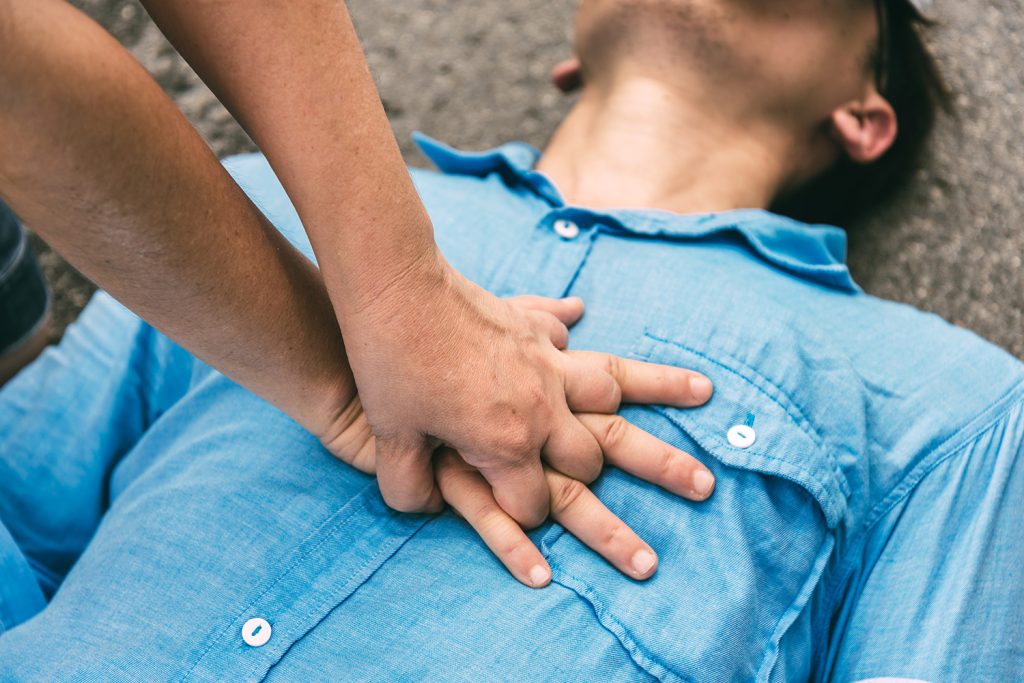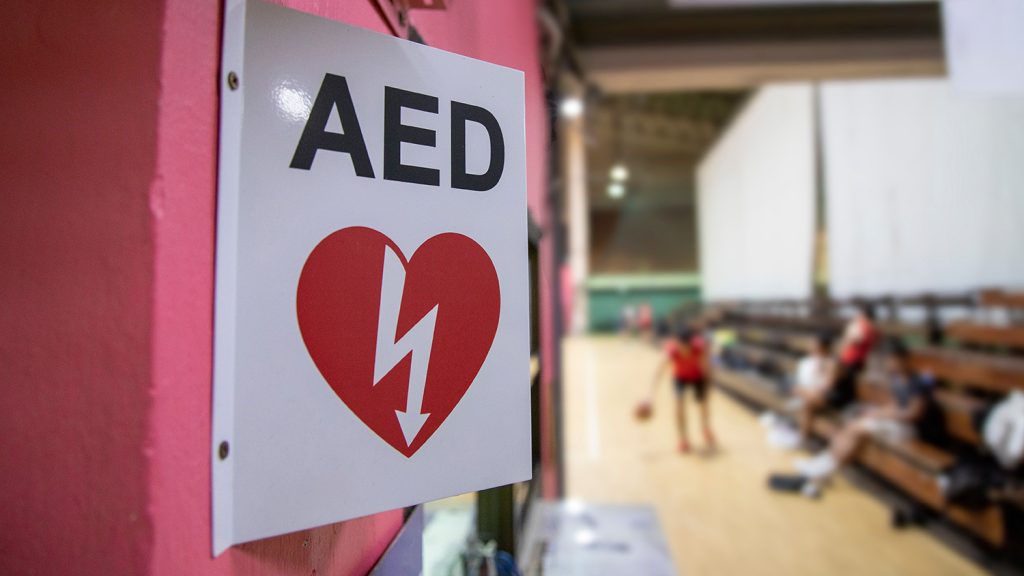Addressing Sudden Cardiac Death
- Home » Sudden Cardiac Death (SCD) » Addressing Sudden Cardiac Death
Addressing Sudden Cardiac Death
How common is cardiac arrest?
Out-of-hospital cardiac arrest (OHCA) is a leading cause of death among adults in the Western Countries. OHCA affects approximately 400,000 individuals in Europe annually (2). Because of the heterogeneity of geographical and logistical aspects, a patient’s characteristics, as well as medical and community reporting, there are substantial differences among countries. In any case, the global average incidence is about 55 adult OHCA of presumed cardiac cause per 100.000 person-years (2).
How to address a cardiac arrest?
Cardiopulmonary resuscitation (CPR) is a first aid manoeuvre which, if used correctly and early, can save lives in the event of a cardiac arrest. CPR in adults involves the execution of two specific manoeuvres: cardiac massage (chest compressions) and artificial ventilation (mouth-to-mouth respiration or mouth-to-mask respiration – recommended).

In the first few minutes following OHCA, swift implementation by bystanders of a limited number of critical actions, known as “chain of survival”, can, regardless of the underlying cause, substantially increase the chance of survival (3). The actions needed to be taken by the so called “first responders” include: 1) rapid activation of the Emergency Medical Service by calling a dedicated phone number; 2) rapid initiation of CPR; 3) prompt application and use of an automated external defibrillator (AED) (4).
An AED is a device that analyses the heart rhythm and evaluates whether it is shockable, warns the rescuer if defibrillation is needed, and delivers a shock if it is necessary. Two electrodes are placed on the patient’s chest and connected to the equipment. An algorithm inside the device analyses the heart rhythm and determines whether a shock is needed or not to save the patient. Out of all OHCA, about a quarter (27%) have a presenting rhythm that can be treated by an external defibrillator (2).

The reported average survival following OHCA in an adult population is poor, about 7% (ranging from 2% to 11%), but significant efforts are being invested in improving it (5, 6). The reason for the wide variability of the survival rate is not completely understood and the determinants of outcome need to be fully elucidated. The factors believed to influence outcome do not only depend on the different National Health Organizations or the time of arrival of the Emergency Medical Services. Factors related to “first responders”, as time from recognition of cardiac arrest to bystander CPR, quality of CPR itself, and availability or awareness of presence of AEDs in public spaces surely play relevant roles (6).
In fact, several national initiatives have been undertaken to increase awareness in lay people of fast recognition and management of OHCA to facilitate participation in the pre-hospital “chain of survival”. All these initiatives have been demonstrated to significantly improve the outcome of victims (7).
References
- Zipes DP, Wellens HJ. Sudden cardiac death. Circulation. 1998; 98(21):2334–51
- Berdowski J, Berg RA, Tijssen JG, Koster RW. Global incidences of out-of-hospital cardiac arrest and survival rates: Systematic review of 67 prospective studies. Resuscitation 2010; 81(11):1479-87
- Cummins RO, Ornato JP, Thies WH, Pepe PE. Improving survival from sudden cardiac arrest: the “chain of survival” concept. Circulation 1991; 83:1832–47.
- Field JM, Hazinski MF, Sayre MR, et al. Part 1: executive summary: 2010 American Heart Association Guidelines for Cardiopulmonary Resuscitation and Emergency Cardiovascular Care. Circulation 2010; 122: S640-S656
- Sasson C, Rogers MA, Dahl J, Kellermann AL. Predictors of survival from out-of-hospital cardiac arrest: a systematic review and meta-analysis. Circ Cardiovasc Qual Outcomes 2010; 3(1):63- 81
- Auricchio A, Gianquintieri L, Burkart R, Benvenuti C, Muschietti S, Peluso S, Mira A, Moccetti T, Caputo ML. Real-life time and distance covered by lay first responders alerted by means of smartphone-application: Implications for early initiation of cardiopulmonary resuscitation and access to automatic external defibrillators. Resuscitation 2019; 141:182-187
- Wissenberg M, Lippert FK, Folke F, Weeke P, Hansen CM, Christensen EF, Jans H, Hansen PA, Lang-Jensen T, Olesen JB, Lindhardsen J, Fosbol EL, Nielsen SL, Gislason GH, Kober L, Torp- Pedersen C. Association of national initiatives to improve cardiac arrest management with rates of bystander intervention and patient survival after out-of-hospital cardiac arrest. JAMA 2013; 310:1377-84
